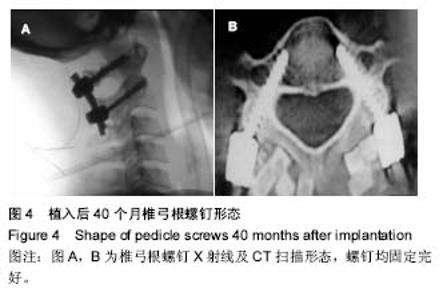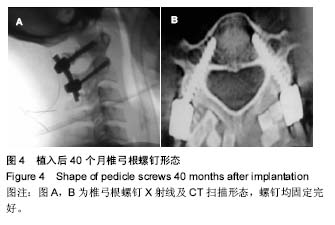| [1] 尹庆水,夏虹,吴增晖.经口寰枢椎复位内固定手术[M].北京:人民军医出版社,2010. [2] Rodt T, Schlesinger A, Schramm A, et al. 3D visualization and simulation of frontoorbital advancement in metopic synostosis. Childs Nerv Syst. 2012;23(11):1313-1317.[3] 张敏,王卫东,王玉强,等.前路齿状突中空螺钉导向仪的设计和解剖学研究[J].中华实验外科杂志,2014,31(5):1141-1143.[4] 王岩.骨科精准医疗:应用与思考[J].中华医学杂志, 2015,9(31): 2512-2514.[5] 李增春,陈德玉,吴德升,等.第三届全国颈椎病专题座谈会纪要[J].中华外科杂志,2008,46(23):1796-1799.[6] 庄怀铭,郭跃跃,林勇彬,等.颈前路加压螺钉内固定治疗齿状突骨折的临床研究[J].中华全科医学,2012,10(7):1063-1065.[7] Digioia AM. What is computer assisted orthopaedic surgery? Clin Orthop. 2013;354:2-4.[8] 郝定均,贺宝荣,许正伟,等.寰椎"椎弓根"三维CT重建测量及分型的临床意义[J].中国脊柱脊髓杂志,2012,22(2):142-146.[9] 段丽群,张文志,尚希福,等.颈前路空心加压螺钉治疗Ⅱ型齿状突骨折[J].临床骨科杂志,2011,14(3):244-246.[10] Attias N. Lindsey RW. Starr AJ, et al. The use of a virtual three-dimensional model to evaluate the intraosseous space available for percutaneous screw fixation of acetabular fractures. J Bone Joint Surg Br. 2011;87(11):1520-1523.[11] Yoshiharu K, Masato N, Taketoshi Y, et al. Development of a new technique for pedicle screw and Magerl screw insertion using a 3-dimensional image guide. Spine. 2012;37(23): 1983-1988.[12] Knop C, Oeser M, Bastian L, et al. Development and validation of the Visual Analogue Scale (VAS) Spine Score. Unfallchirurg. 2011;104:488-497. [13] Frankel HL, Hancock DO, Hyslop G, et al. The value of postural reduction in the initial management of closed injuries of the spine with paraplegia and tetraplegia. I. Paraplegia. 1969;7:179-192.[14] 何宏伟,隋桐,赵慧毅,等.囊椎椎弓根螺钉置入相关参数的三维CT分析[J].中国组织工程研究,2012,16(9):1526-1529.[15] Mouhsine E, Garofalo R, Borens O, et al. Acute total hip arthroplasty for acetabular fractures in the elderly: 11 patients followed for 2 years. Acta Orthop Scand. 2012;73:615-618.[16] 尹华,赵银必.三种置钉方法在下颈椎经椎弓根螺钉置入过程中的比较[J].中国组织工程研究与临床康复, 2011;15(22): 4040-4044.[17] Stockle U, Konig B, Dahne M, et al. Computer assisted pelvic and acetabular surgery. Clinical experiences and indications. Unfallchirurg. 2013;105:886-892.[18] Gay SB, Sistrom C, Wang GJ, et al. Percutaneous srew fixation of acetabular fracture with CT guidancerrpreliminary results of a new teachnique. AJR Am J Roentgenol. 2012; 158:819.[19] 朱希田,王以朋,徐杰.寰椎椎动脉沟变异与椎弓根置钉的三维CT分析[J].中国骨与关节外科,2014,7(6):451-455.[20] Haidudewych GJ, Scaduto J, Herscovici D Jr. lartogenic nerve injury in acetabular fracture surgery: a comparison of monitored and unmonitored procedures. J Orthop Trauma. 2012;16(5):297-301. |

